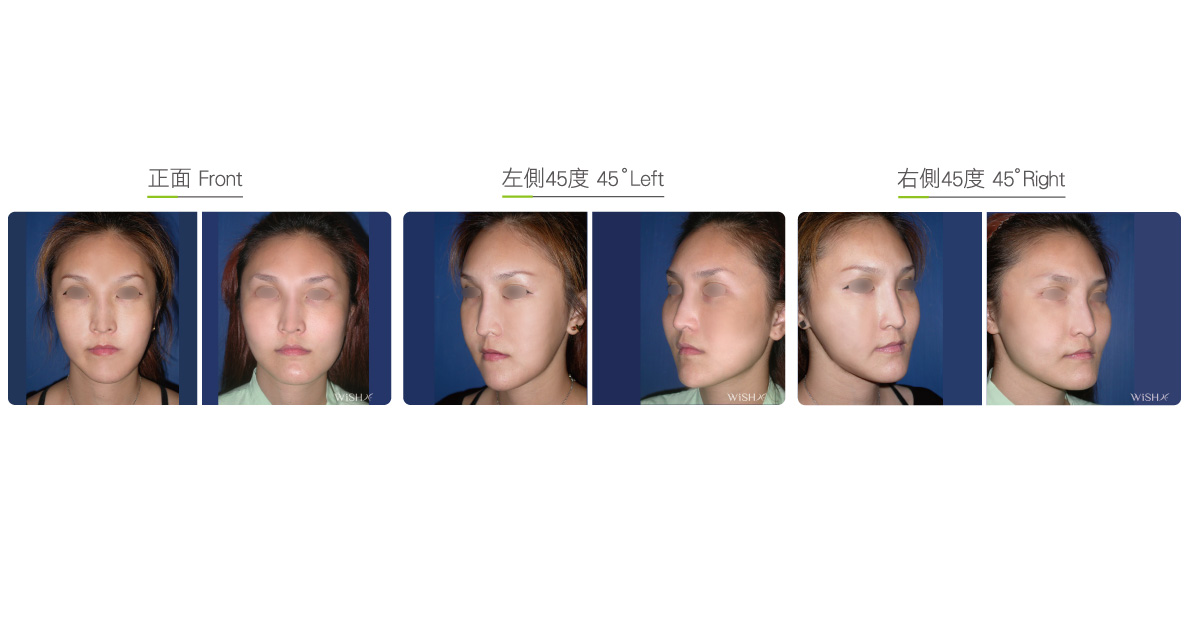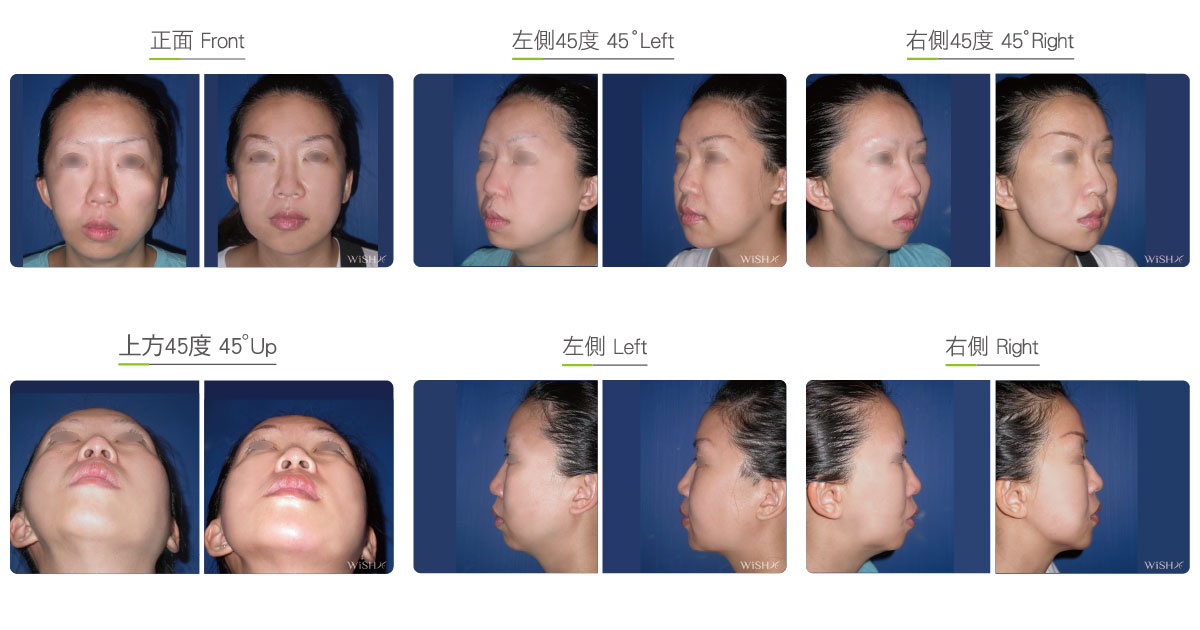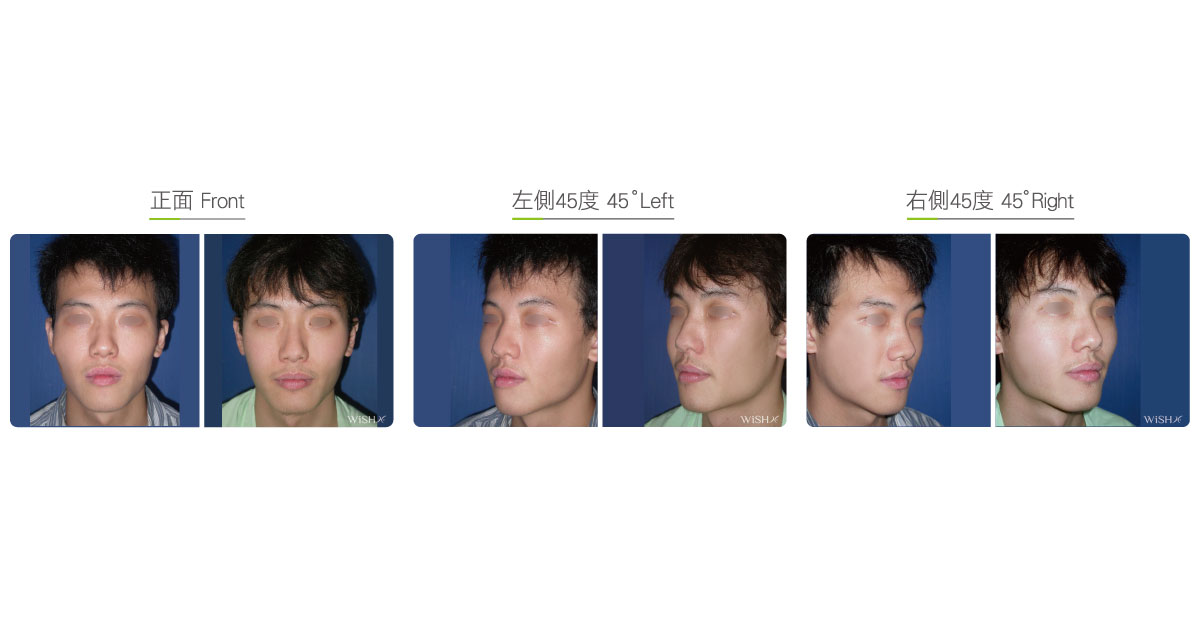Asymmetric Face Correction
There are various causes for an asymmetric face (also called “unequal face”). The commonest reason is congenital asymmetric facial development (50%), followed by acquired teeth malocclusion (35%). Some rare reasons are trauma or side sleeping (15%). The incidence in women is higher than that in men, and usually, the right face is smaller than the left. Because an asymmetric face does not cause any functional disorder, many patients do not think that it is necessary to undergo any corrective plastic surgery. Clinically, Dr. Chuang finds that most people will not even notice that they have slightly unequal faces. Whether patients need to undergo corrective surgeries is dependent on the severity of asymmetry or the willingness and expectation of patients.
The most common reason for an unequal face is caused by asymmetric facial bone structures; the next most common reason is the difference in the thickness of skin and soft tissue on both sides. Surgical options should vary depending on different indications. If patients show only mild asymmetry and the differences are mostly caused by skin and soft tissues but not bone structures, the problem can be simply corrected by unilateral facial liposuction or buccal fat pad removal; however if the asymmetric face is caused by variation in bone development, such as an awry facial diagonal (namely unilateral cheek protrusion with contralateral jaw hypertrophy), it will have to be esthetically corrected by unilateral zygomatic reduction and contralateral mandible reduction. The procedures are very similar to regular facial bone surgery; however, Dr. Chuang will have to precisely estimate the difference between the bones on both sides and focus more on bone adjustment and fixation during the procedure. He will perform unilateral zygomatic arch/body reduction, mandible angle resection/splitting osteotomy, or both in the contralateral side. The ultimate goal of the surgeries is adjusting bone structures as much as possible to make the facial asymmetry unperceivable.
To correct the asymmetric facial contour, patients can also choose Medpor implants to augment the facial bone defects. These permanent implants have highly biocompatibility with human bodies and rarely cause tissue reaction or rejection. Dr. Chuang can also choose various sizes and types of cheekbone or mandible implants to create a symmetric result for each individual patient. Besides bone cutting, Medpor implant augmentation is an alternative for patients who do not want to undergo extensive bone reduction.
Surgical conditions
Duration
- Type of anesthesia: General anesthesia
- Type of incision: Intraoral upper gum (2–3 cm) or lower gum (5 cm)
- Recovery: 7–10 days
- Removal of stitches: None
General instructions
No food and water on the day of surgery
- Only a soft or fluid diet should be consumed for 1 week postoperatively.
- Extensive opening of mouth or consumption of very hard food and fruits should be avoided for 1 month postoperatively.
- Force on the face or squeezing of the face should be avoided for 3 months postoperatively.
- A warm towel should be applied on the chin every day to help sensitivity recovery within 3 months postoperatively.
Ideal candidates
- Those who subjectively believe that an unequal face would affect their confidence and social life.
- Those whose faces gradually displace or become aslant due to malocclusion.
- Those whose facial expressions or mouth shapes are affected by misappropriated cheekbones or mandibles.
- Those with asymmetric “baby fat” or unequal cheeks.
Potential complications
- Temporary chin numbness
- Asymmetric mouth shape or expression
- Cheek skin loosening
- Incomplete correction
- Over-correction
Surgical advantages
-
Will improve the asymmetric face and enhance patients’ confidence.
-
The surgical result is stable and long lasting.
-
Makes the mouth shape and facial expression return to normal.
Surgical drawbacks
-
Unable to correct functional defects such as teeth malocclusion.
-
Will cause skin loosening or sagging on one side of the face.
-
Unable to completely ensure symmetry if the bone difference is too obvious (will need prognathic surgery).



